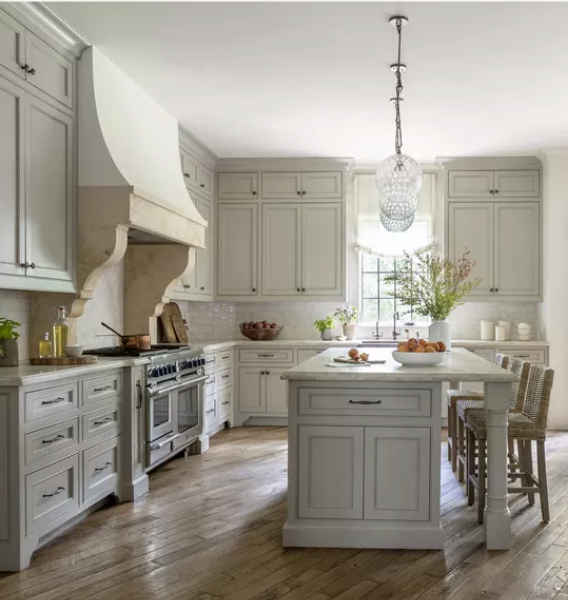Transitional Design: The Look Everyone’s Asking For
If you’ve ever looked at a space and thought, this feels fresh, but not trendy—comfortable, but elevated, there’s a good chance you were standing in a transitional home.
This aesthetic is quietly everywhere right now, especially in Northeast Florida homes where clients are craving that balance between timeless and current. It’s clean, approachable, and polished. And when done well, it feels effortless.
But here’s the thing—transitional design isn’t a “style” you can copy-paste from Pinterest. It’s about restraint, texture, and making intentional choices that feel layered, not loud.
Let’s break down what makes transitional design work—and how we interpret it for modern Ponte Vedra homes.
01. What Is Transitional Design, Really?
Transitional design bridges the gap between classic and contemporary. You’ll find nods to traditional silhouettes—think roll-arm sofas or paneled walls—paired with more current elements like streamlined furniture, modern lighting, or neutral color palettes.
It’s less about a strict formula, and more about creating a feeling: warm but uncluttered, grounded but light, timeless without being too safe.
We often describe it as the “refined middle ground”—for clients who want spaces that evolve gracefully with time.
02. The Palette: Warm Neutrals, Done Right
One of the hallmarks of transitional interiors is a soothing, tonal color story. But there’s a difference between “neutral” and “flat.” The key? Layered texture.
We build depth with natural finishes—oak floors, woven materials, linen upholstery—and pair them with subtle contrast: crisp white walls and darker accents in matte black or bronze.
This combination creates a soft, sophisticated backdrop that works beautifully in our light-filled coastal homes.
03. The Materials: Balance Is Everything
Transitional design thrives on contrast. A clean-lined sofa softened by a boucle throw. Polished nickel paired with unlacquered brass. Sleek cabinetry warmed by aged wood.
When working with clients, we often pull inspiration from both coasts—bringing in the casual elegance of a West Coast home and refining it with Southern charm and structure. The result? A space that feels personal and quietly luxurious.
04. How We Bring It All Together
Our approach to transitional styling is rooted in how you actually live in your home. We create layouts that make sense for real life—whether that’s hosting neighbors for wine night, wrangling toddlers in the kitchen, or sneaking in a quiet coffee moment before the house wakes up.
Every piece we choose has a job to do. And everything we install is meant to last—not just physically, but stylistically.
Design That Evolves With You
If you’ve been pinning images or saving posts that feel “like you, but better”—you’re not alone. Transitional design is what so many clients are gravitating toward right now, and we’d love to help you bring it home in a way that feels right for your space.





